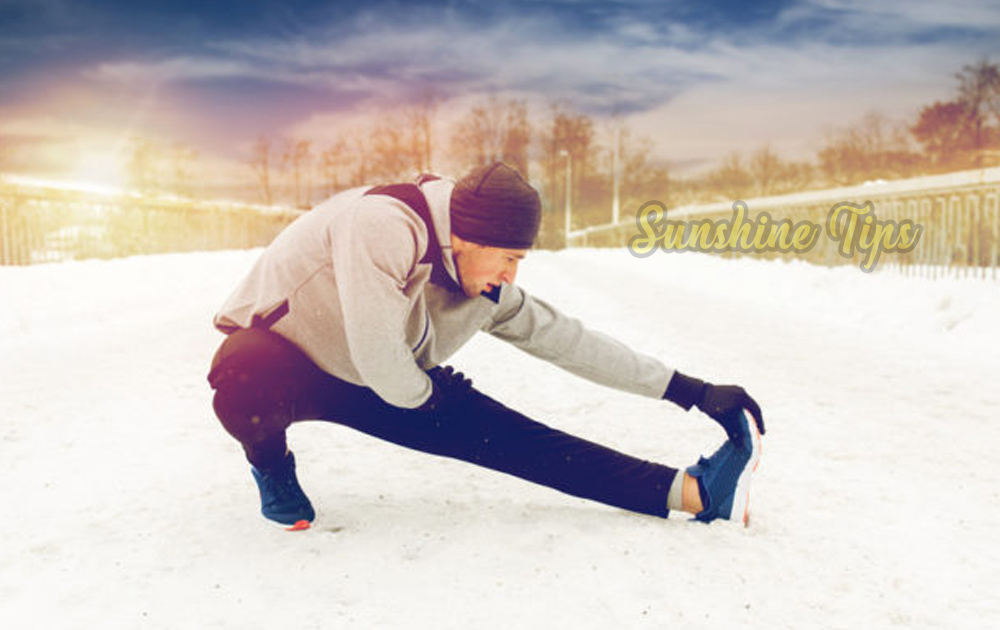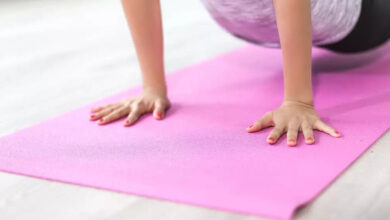
Exercise in winter. Winter is a great time to exercise. When the sky is clear and bright, it’s tough not to get inspired and want to get out into nature to burn some calories. When the winter winds blow, though, the prospect of curling up in front of a fire with a mug of hot chocolate appears far more appealing. So, how do you stay in shape as the weather gets cooler? Therefore, we consulted with experts to maintain shape and discovered six strategies to stay active during the winter.
Table of Contents
Exercise in winter
You’ll be able to keep those excess calories away and retain a smile on your face till April if you incorporate these ideas into your routines. Whether it’s pushing through a circuit on an exercise bike or heading out into the great outdoors and taking advantage of some of the fun that winter sports have to offer, you should be able to find a workout that will motivate you to get out of bed during the winter months.
Try skiing
While your favourite summer activities may be on hold, it’s time to appreciate the benefits of winter. Nature’s theme park opens as the snow begins to fall. While skiing, snowboarding, and even sledging are all enjoyable winter activities, they are all big calorie-burners. Skiing burns 314 calories per hour for a 160-pound person, according to the Mayo Clinic. Even if it’s a beautiful day on the slopes, you may still enjoy blue skies and a drink of mulled wine or beer during après-ski.
Regular jogging
Signing up for an event, according to Jeff Parke, owner of Top Fitness magazine, is a good way to stay motivated to exercise. “Even in the winter, there are numerous races, obstacle courses, and tournaments to choose from. Look for a holiday-themed running event, such as a Turkey Trot or a Jingle Bell Run, to participate in “he stated, “Active.com is a fantastic resource for finding races in your region.”
Build a home gym
Make space for a home gym in your home. You may already have this set up if you’re used to working out, but if you’re new to fitness, you could set up an exercise bike or treadmill, a yoga mat, and a few hand weights. Consult a personal trainer to determine what you require. Lorraine Lam, a snowboard instructor, said: “I have a separate gym room at home, which allows me to keep active even when the weather isn’t cooperating. Even if you don’t have much space, a yoga mat and bodyweight exercises can help you stay active when you don’t want to go outside.”
Start a fitness club
Working out with friends, according to Kawan Karadagh, a California-based personal trainer, is the greatest way to stay on track throughout the colder months. He told Live Science, “Starting an exercise club is a terrific way to stay accountable, make new friends, and monitor your progress during the cold months.” You can watch workout videos on YouTube, host an activity party, or play an active video game to get your heart rate up. According to researchers from the University of Aberdeen, meeting a new gym companion not only raised the amount of exercise a person completed, but it also made them work out harder if their gym buddy was emotionally supportive.
Balanced diet training
If the chilly, dark mornings and early nights in the winter deter you from exercising, transfer it to your lunchtime, according to Napa Valley personal trainer Josh Schlottman. “Because midday is usually the warmest and brightest time of day,” Schlottman says, “you might find some extra workout incentive during these hours.” “Take a walk or jog to a bench where you can practice resistance strength training activities.”
Do HIIT session
If you already have plans for lunch and want to get your exercise done before it gets dark, personal trainer Elliott Upton of Ultimate Performance suggests scheduling a HIIT session. “It’s a good method to keep your activity levels up when generally the shorter days and inclement weather can limit your daily activity levels and thus your energy expenditure,” Elliot told Live Science.
A 30-minute HIIT session can burn up to 30% more calories than 30-minutes of running or cycling, according to a study from the University of Colorado. Upton recommends doing 10 rounds of the following for a HIIT workout, which should take about 15 minutes. For 20 seconds, sprint as fast as you can, then walk, breathe, and recuperate for one minute. He suggests doing this no more than three times per week. “While little HIIT is beneficial, too much can be detrimental to your recuperation,” Upton explained.
Warm-up: When working out in the cold, good stretching is essential. “One of the most important reasons to warm up is to raise your core temperature, which will take a little longer if you’re out in the cold,” said track coach David Stone of Elmhurst University in Chicago. “When I’m training someone in cooler weather, I switch their warm-up from walking drills to skipping or jogging drills, and subsequently to higher-tempo movement activities. We then try to keep the time between the warm-up and the workout as short as possible.”
Drink water: It’s also crucial to stay hydrated during the cold months. Stone explained that just because it isn’t hot doesn’t mean you aren’t losing water. “You’re still dehydrating in the winter,” he explained, “but you may not be getting the symptoms as vividly due to the temperature difference.”
Fine clothes: Chris Lee, a personal trainer in Los Angeles and the proprietor of Hau. Fit said: “For comfort and safety, consider riding and running outside while wearing warm reflective clothing and lighting equipment. Wear a face mask and gloves to keep your hands warm and the air entering your lungs warm.” Before beginning any new workout programme, check with your doctor to ensure that you are medically fit to participate.




